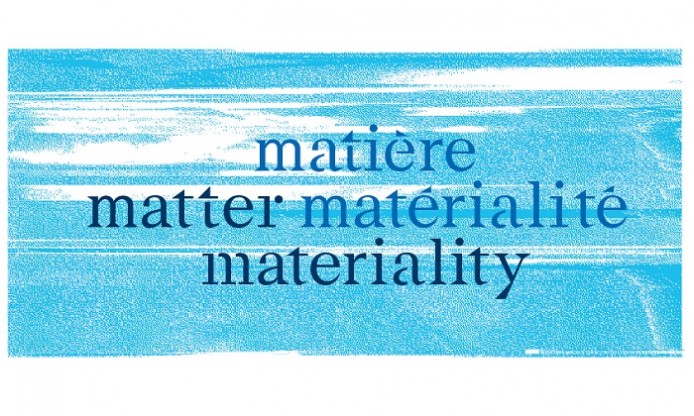Proposals in English or French are due on September 15, 2023.
This scientific event will take place in the city of Lyon, France, 23-28 June 2024.
The CIHA Comité International d’Histoire de l’Art congress gathers every four years researchers from all over the world around a strong theme of the field of art history. The congress is open to advanced and junior scholars of all professional backgrounds. It offers a unique experience of sharing with the international scientific community. It is organzied by the Comité Français d’Histoire de l’Art (CFHA), the Institut National d’Histoire de l’Art (INHA) and the Laboratoire de Recherche Historique Rhône-Alpes (LARHRA), with CNRS and Université Lumière Lyon 2.
For more information, visit the official CIHA website (here).
—
Panel 1 – Photographic materialities
Chairs: Marie Auger, Colette Morel (Paris 1 Panthéon-Sorbonne) ; Stephanie Jamieson (Victoria and Albert Museum)
The theme of materiality, first considered from a technical standpoint, became truly fundamental to photographic studies when the “material turn” of the 1980s affected historical and theoretical reflection on the photographic image. With the generalization of digital techniques, a retrospective interpretation of the analogical period begins, with numerous methodological axes (art history, visual studies, media theory, anthropology, sociology, conservation, and restoration). Should we interpret it as expressing apprehension about the “dematerialization” of the digital?
The (im)materiality of photography brings together researchers, curators, restorers, and artists around the distinction between image and object, emulsion, and support. The increasing scarcity of silver-based media thus prompts an examination of the industrial and post-industrial history of photography while focusing on its production modes. The processes and know-how threatened by a sector’s structural evolution are the subject of new reflections. Far from constituting yet another milestone towards “post-photography”, the angle of materiality today requires an ecology of media. On the one hand, a history of the materials, which are frequently dangerous and toxic, is needed to evaluate the ecological footprint of photography. On the other hand, existing research that advocates an archaeology of networks takes into account the financial burden and environmental cost of the creation, distribution, and storage of digital images.
The plurality of these recent contributions invites us to rethink the materiality of photography from a material and processual perspective. What are the materials, the gestures, and the know-how of photography? What economic, industrial, scientific, aesthetic, and philosophical history should be invoked to comprehend its significance?
Research areas:
- Materials for the production and diffusion of photographs (economic, industrial and ecological considerations);
- Light as a photographic material;
- Gestures and know-how;
- Materiality of supports (aging, detour, hybridization, reuse, experimentation, displays);
- Materiality of the photographic archive (processing, storage, distribution, restoration, and conservation issues);
- Photography as image and object.
Corresponding author(s):
augermariea@gmail.com (Marie Auger)
colette.jeanne.morel@gmail.com (Colette Morel)
Panel 2 – Photomechanical Prints and the Material Agency of Images
Chairs: Hana Buddeus, Katarína Mašterová, Fedora Parkmann (Czech Academy of Sciences)
Photomechanical prints are rarely considered objects of their own. They tend to be confined to the role of invisible intermediaries that provide access to various types of photographic images, whether artistic or informational. Previous research on the history of photomechanical printing technologies has revealed how crucial these inventions were in establishing photography as the main means of visual communication in the 20th century. Moreover, the recent material turn in photography studies has shifted the focus from the aesthetics and subject matter of photographs to their materiality, from art historical interpretation to the study of the uses, circulation, and social context of photographic objects. This panel aims to expand the knowledge on photomechanical prints, challenging their perceived transparency by exploring their material appearances and social agency. To what extent did the materiality of photomechanical prints influence their social uses? How did the dissemination of photomechanical prints in various formats – books, journals, postcards, or decorative objects – serve art, culture, commerce, or science? These questions are all the more topical today because many such documents are now available in digital form, crucially changing the way we perceive and study them. The social impact of photomechanical prints will be studied from the first inventions to the boom of the halftone and other processes used in the 20th century.
We especially welcome interdisciplinary and cross-cultural contributions that investigate photomechanical prints in relation to regions and topics previously regarded as marginal in art history. Possible papers will be organized around the following aspects of photomechanical prints: 1) materials and formats, 2) transregional communication, 3) their role in shaping knowledge, 4) the construction of identities.
Corresponding author(s):
masterova@udu.cas.cz (Katarína Mašterová)
buddeus@udu.cas.cz (Hana Buddeus)
fedoraparkmann@aol.com (Fedora Parkmann)


